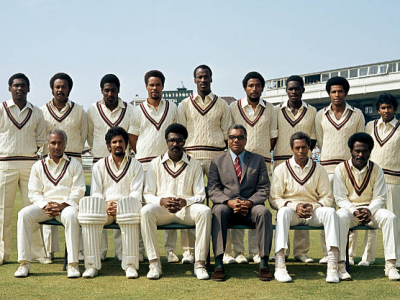As the sun sets on a dusty field in India and as the rain pours over a cricket pitch in England, one thing unites these scenes across the globe – the resounding passion for cricket. From its humble origins in the English countryside to becoming a global phenomenon, the journey of cricket has been nothing short of extraordinary. With over 2.5 billion fans, cricket stands as the second most popular sport, only surpassed by soccer. Its magnetic pull extends from India’s packed stadiums to Australia’s sprawling fields. But what fuels this meteoric rise, and how has the sport cemented its indomitable presence in diverse cultures worldwide?
In this article, we unravel the fascinating narrative of cricket’s exponential growth – from a local pastime to an emblem of national pride and finally to a dominant force on the global stage. Join us as we delve into the compelling evolution of cricket, exploring its impact, reach, and the fervent fan base that renders it a cultural force to be reckoned with, hoping that if you play the Andar Bahar game online, you might also consider cricket.
The History and Origins of Cricket
Cricket’s origins can be traced back to the 16th century in England, where it was played by shepherds using a ball and a crook. Over time, the game evolved, and by the 18th century, it had become a popular pastime among the British aristocracy. The formation of the Marylebone Cricket Club (MCC) in 1787 formalized the rules of the game, laying the foundation for modern cricket.
The advent of international cricket in the late 19th century further propelled the sport’s global appeal. The first Test match was played between Australia and England in 1877, marking a significant milestone in the history of cricket. This paved the way for the formation of the International Cricket Council (ICC) in 1909, signaling cricket’s transition from a local pastime to an internationally recognized sport.
The Globalization of Cricket
The globalization of cricket can be attributed to various factors, including colonial influence, migration, and technological advancements. As the British Empire expanded, it brought cricket to new territories, where it took root and flourished. The establishment of cricket clubs and leagues in these regions helped to solidify the sport’s presence and foster a sense of camaraderie among players and fans.
Advancements in technology, such as television and the internet, have also contributed to the global reach of cricket. The broadcast of international matches and the proliferation of online streaming platforms have made cricket accessible to a broader audience, transcending geographical boundaries and time zones. This increased visibility has not only expanded the fan base but has also attracted commercial interest, driving the sport’s global expansion.
The Economics of Cricket
The economic significance of cricket cannot be understated, as it has become a multi-billion-dollar industry with far-reaching implications for players, franchises, governing bodies, and ancillary businesses. The commercialization of cricket has led to lucrative broadcasting deals, sponsorship agreements, and endorsement opportunities, creating a thriving ecosystem around the sport.
The Indian market, in particular, has emerged as a financial powerhouse for cricket, with the IPL commanding staggering broadcast rights and sponsorship revenues. The league’s success has not only enriched players and team owners but has also spurred investment in grassroots development, infrastructure, and talent scouting. This model has been replicated in other cricketing nations, leading to increased investment in player welfare, facilities, and fan engagement initiatives.
The Future of Cricket: Emerging Markets and Opportunities
As cricket continues to expand its global footprint, emerging markets such as China, the United States, and parts of Europe present untapped potential for the sport’s growth. Efforts to popularize cricket in these regions, coupled with strategic partnerships and grassroots initiatives, hold the promise of unlocking new fan bases and commercial opportunities.
The proliferation of T20 leagues and the diversification of cricket formats have made the sport more adaptable to different cultural preferences and viewing habits, further enhancing its appeal in non-traditional markets. The emergence of women’s cricket as a mainstream phenomenon has also opened doors for inclusivity and diversity, providing a platform for female athletes to showcase their talent and inspire future generations.
Conclusion
In conclusion, the phenomenal growth of cricket from local fields to global stages is a testament to the sport’s enduring legacy and universal appeal. Through its rich history, cultural resonance, and economic influence, cricket has transcended geographical, social, and political barriers, uniting fans and players in a shared passion for the game. As cricket continues to evolve and expand, its future growth prospects remain promising, fueled by innovation, inclusivity, and a deep-rooted connection with fans worldwide.
The journey of cricket, from its humble origins to becoming a global phenomenon, is a reflection of the sport’s ability to adapt, inspire, and captivate audiences across generations. As we look ahead, the boundless potential of cricket to shape and enrich lives, communities, and societies reaffirms its status as one of the most compelling and cherished sports in the world. From local fields to global stages, the resounding legacy of cricket endures, carrying with it the hopes and dreams of millions who find solace, joy, and unity in the timeless embrace of this remarkable game.









